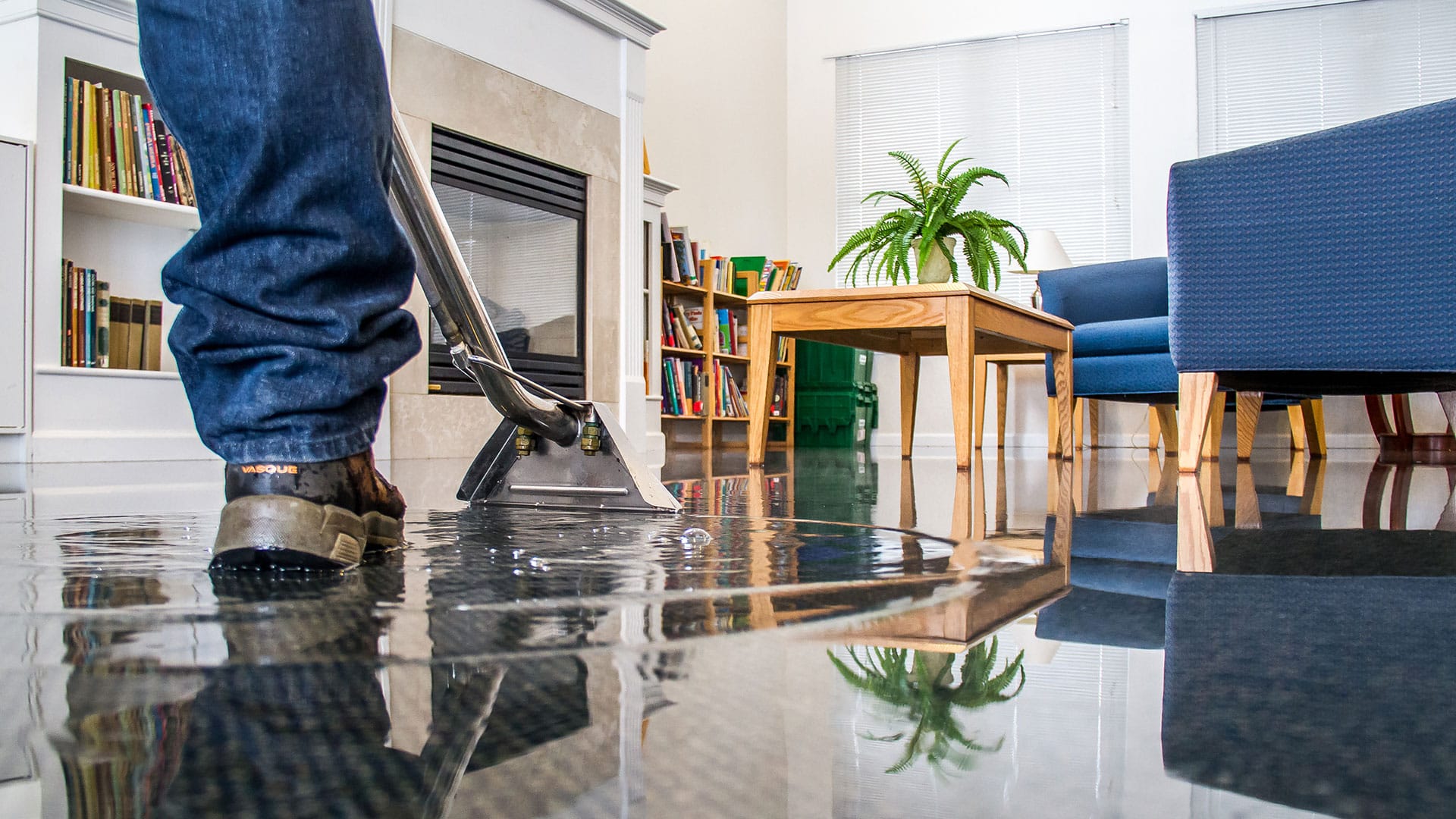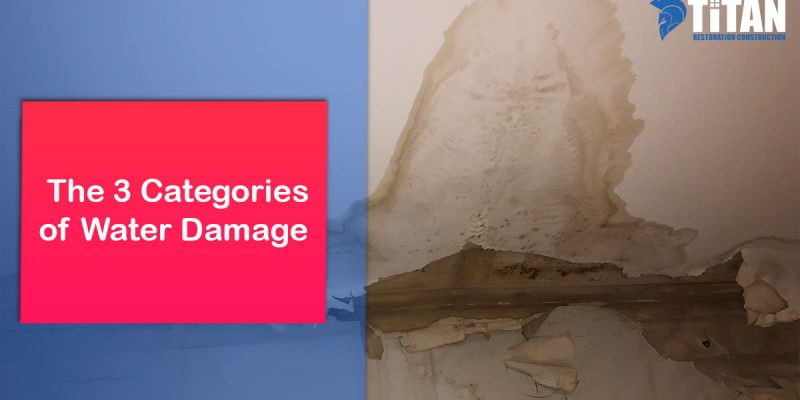The Process of Water Damages Cleanup: Ensuring Your Home Is Restored Effectively
Water damages can be a complicated obstacle for house owners, necessitating a thorough and structured clean-up procedure to restore security and capability. At first, a detailed assessment is vital to recognize the degree of the damages and determine the proper removal steps. Following this, effective water extraction methods play a crucial role in reducing additional injury. The subtleties of drying out, disinfecting, and eventual restoration are similarly necessary and frequently ignored. Recognizing these phases can make a substantial distinction in the end result of your home's reconstruction, prompting a closer look at what each step entails.
Evaluating the Damage
Upon discovering water damages, the primary step is to completely examine the level of the effect. This preliminary assessment is vital, as it aids establish the required steps for reliable cleaning and remediation. Begin by examining the affected areas, consisting of wall surfaces, ceilings, floors, and personal items, to determine the source of the water breach, whether from flooding, leakages, or condensation.
Recording the damage is important for both insurance policy claims and planning repair efforts - damage restoration services. Usage photographs and created notes to catch the severity of the damages, noting any type of damaged structural components and materials. Pay unique attention to locations that may not be quickly visible, such as behind wall surfaces and under carpets, as concealed moisture can cause further issues, including mold and mildew growth
Furthermore, analyze the timeline of the water direct exposure. The longer the materials stay damp, the greater the capacity for damages. Understanding the period of direct exposure will inform the seriousness of removal efforts. Eventually, a thorough assessment prepares for an effective water damage cleanup process, making certain that all affected areas are attended to properly and thoroughly.
Water Removal Techniques

Experts normally utilize submersible pumps for larger volumes of water, which can swiftly reduce flooding in cellars or various other impacted areas. For smaller amounts, wet/dry vacuum cleaners are usually made use of to draw out residual moisture from carpetings and tough surfaces. Additionally, using mobile extractors permits targeted removal in confined rooms or locations with delicate products.
In circumstances of polluted water, such as sewer or floodwater, progressed extraction strategies might include the use of biohazard tools to ensure safety and security and conformity with health and wellness regulations. High-powered removal tools are essential in minimizing water retention in architectural materials, which can bring about mold growth and structural degeneration if not resolved immediately.
Ultimately, the performance of water extraction strategies plays a critical role in the general success of the water damage cleaning process, laying the foundation for subsequent reconstruction efforts.
Drying and Dehumidification
As soon as standing water has been effectively drawn out, the next important phase in the water damages cleanup process is drying out and dehumidification. This step is vital to stop further damages and mold and mildew growth, which can occur within 24 to two days in damp environments.
To attain efficient drying, specific equipment such as industrial-grade air moving companies and dehumidifiers is utilized. Air moving companies flow air throughout damp surface areas, enhancing dissipation prices, while dehumidifiers decrease humidity degrees airborne, promoting a conducive atmosphere for drying out. The mix of these tools makes sure that dampness is attracted out from walls, floors, and home furnishings, permitting them to dry thoroughly.
It is essential to monitor the drying process closely. Specialists typically utilize dampness meters to analyze the dampness web content in numerous products, ensuring that all affected locations reach acceptable dryness levels. This meticulous approach helps to stop covert moisture pockets that could lead to structural damages or harmful mold and mildew development.

Cleaning and Sanitizing
After the drying find out here now out and dehumidification phase is complete, the following crucial action in water damage cleaning is cleaning up and sanitizing the affected locations. This process is essential to stop the development of mold and mildew, bacteria, and various other virus that grow in moist environments.
The cleansing phase generally involves eliminating any particles, dirt, and contaminants from surface areas using specialized cleansing agents. For hard surface areas, a combination of soap and water or business cleaning items is frequently utilized. Soft products, such as upholstery and rugs, may need more considerable cleaning approaches, including heavy steam cleaning or deep extraction strategies, to guarantee detailed cleanliness.

Sanitizing complies with cleansing, utilizing EPA-approved disinfectants to get rid of harmful bacteria. This action is essential, especially in locations that may have come into call with floodwaters or sewer, as these resources can pose major health and wellness threats.
Additionally, it is crucial to resolve any kind of remaining smells, which might call for using smell neutralizers or advanced methods like ozone therapy. Appropriate cleansing and disinfecting not just restore the safety and hygiene of your home however likewise lay the foundation for effective reconstruction and fixings in succeeding phases of the water damages cleaning procedure.
Restoration and Repairs

Once the assessment is complete, remediation efforts can start. This generally involves repairing or replacing broken products, guaranteeing that all work abides by neighborhood building regulations and requirements. For instance, if drywall has been endangered, it will certainly need to be removed and changed with brand-new material. Furthermore, floor covering might require comparable attention, relying on the level of water direct exposure.
It is vital to engage knowledgeable restoration specialists during this process, as they have the competence to handle complicated fixings efficiently. They can help alleviate potential future problems, such as mold and mildew development or structural instability, hence ensuring a risk-free and habitable living setting. Ultimately, effective repair and fixings recover the home's integrity and improve its general worth.
Conclusion
In final thought, the procedure of water damage cleanup is vital for bring look at here now back a home to its pre-damage problem. Each stage, from evaluating the damage to carrying out reliable water removal techniques, complied have a peek at this site with by thorough drying, sterilizing, and required repair services, plays a crucial role in guaranteeing safety and compliance with building criteria. Reliable implementation of these actions not only reduces instant damage but likewise boosts the long-lasting honesty and value of the residential property.
Water damages can be a complicated difficulty for homeowners, demanding a organized and precise cleaning process to recover security and functionality. Eventually, an extensive analysis lays the groundwork for an effective water damage cleaning process, making certain that all impacted locations are attended to efficiently and extensively.
Effective water removal techniques are crucial in reducing damages and avoiding more problems adhering to a water intrusion occasion.In final thought, the process of water damage cleaning is vital for recovering a home to its pre-damage condition. Each phase, from assessing the damage to applying reliable water removal strategies, complied with by detailed drying, sterilizing, and needed repairs, plays a necessary duty in ensuring security and conformity with structure criteria.